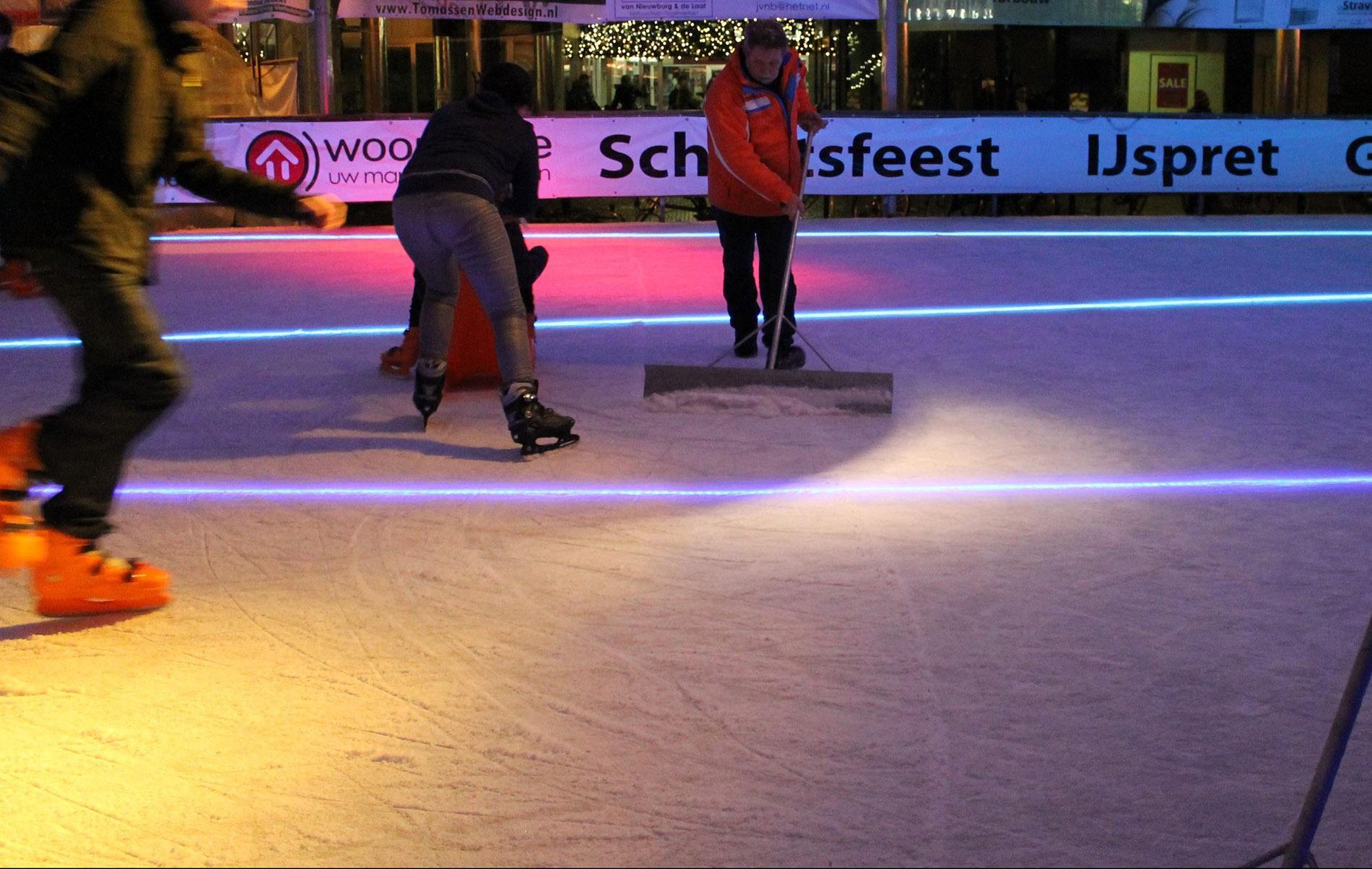Maintenance of the ice-rink floor
Maintenance is more important than you would think for an ice rink. This involves numerous tasks, not only to guarantee skating pleasure and safety, but also for optimum energy efficiency. For this reason, we have compiled a list of the most important tasks to ensure proper maintenance of the ice-rink floor.
Thickness of the ice
An Ice-World ice rink must have an ice thickness of between 7 and 8 cm. If the ice is thinner, then there is a possibility of skaters causing leaks by skating over the piping. However, if the ice is thicker the quality of the ice floor will deteriorate and your electricity bill will increase. Additionally, it will take longer to thaw the ice rink at the end of its operational period.
Remember that the more ice there is, the more energy is needed not only to keep the ice cold, but also to allow it to melt. If you are operating a small ice rink, you can use a snowplough to keep the ice thin and a fire hose to add another layer of ice, if necessary. Larger ice rinks automatically make use of such equipment.
Surface of the ice
The topmost layer of the ice floor must be smooth and may not have any cracks. Otherwise, chances are that skaters will lose control and fall. A layer of scraped ice is often applied artificially to recreational ice rinks. This thin layer of snow has an insulating effect and ensures that the cold is better retained because the sunlight is reflected off the white layer. Doing this can substantially reduce your energy costs. Additionally, this layer of snow reduces skating speeds and skaters land more softly when they fall.
Ice-World rinks of up to 600 m2 can easily be maintained in good condition with an Ice-World snowplough. Convenient extra equipment for larger rinks includes our snow sweeping machine, or even our ice resurfacer.
Ice maintenance
Sweeping at least three times a day is necessary to achieve the best results: once before the opening every day, once before closing at night and at least once in between. Depending on how busy the ice rink is, yet another maintenance round during the day is always a good idea.
Start by sweeping the edges of the ice rink until they are clean. Remove all the snow beneath the boarding until the ice is clearly visible. Next, sweep the centre part of the ice rink and move the snow to an area that is not accessible to the public.
After this, repair any cracks and spray the ice rink with a fire hose that is connected to at least a 19 mm water supply pipe. Spray the ice rink in thin layers, particularly for an uncovered ice rink during a period of frost.
If the ambient temperature is low, take extra precautions when spraying the ice. The water will not only freeze from below, but also from above, causing irregularities in the surface of the ice. We recommend spraying a fine mist.
If it starts to rain and your Ice-World ice rink has clean, smooth edges and an ice thickness of 7 to 8 cm, the rainwater will simply run off. If the edges of the ice rink have become thicker due to accumulated frozen ice scrapings, however, and it starts to rain, the rainwater will not be able to run off the ice rink. As a result, the ice will become thicker due to the rainwater that remains on the ice rink. It will then take more energy to keep the ice rink at the right temperature.
Temperature of the ice
The temperature of the ice is regulated by the freezing unit. This machine is set to a pre-set temperature that is largely based on the ambient temperature. When the ice rink is installed, the installer explains how changes can be made to the temperature settings and when such a change is necessary. You can always reach Ice-World if you need advice regarding this matter.




